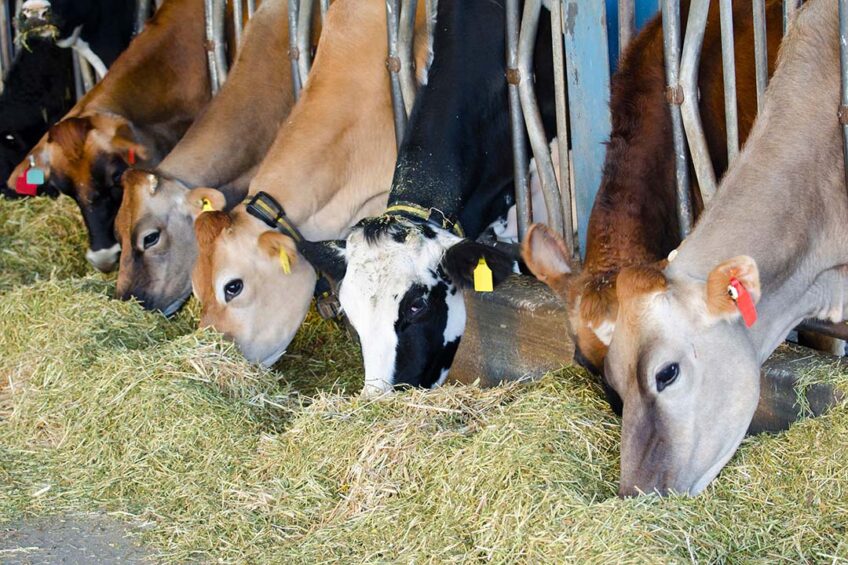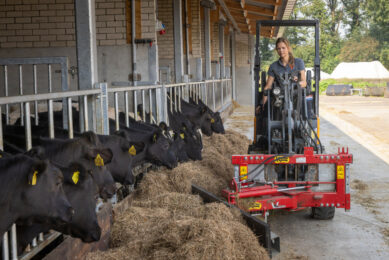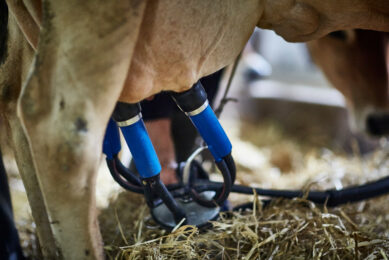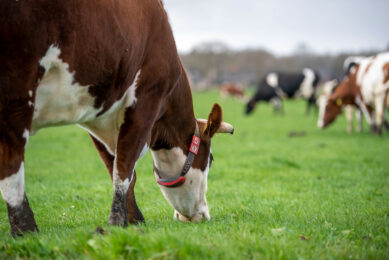UK dairy: Impressive improvements in SCC and fertility

UK dairy farmers continue to make impressive improvements in the fertility, production and Somatic Cell Counts (SCC) of their herds.
The results are from a report and are based on data from 500 National Milk Records (NMR)-recorded Holstein Friesian herds for the year ending August 2023 and shows the trends from 2010 when the University of Reading first published the Key Performance Indicator (KPI) report.
Annual trends in herd health from 2010 to 2023 show that 70% of herds had a SCC below 200,000 in the year ending August 2023 compared to just 26% in 2010 – an improvement of 44%.
Somatic Cell Count
In 2023, 52% of all cows in the 500-head sample completed their lactation without recording a single high SCC above 200,000 cells/ml. The equivalent figure in 2010 was just 35% of cows.
Mastitis
Mastitis incidence across a 242 sample of the 500 recorded herds averaged 22 cases per 100 cows per year, a reduction of 14 cases per 100 cows per year since 2016. In half the herds, 85% of cows recorded no mastitis in completed lactations, an increase from 79% in the same period (+6%).
Fertility
Fertility improvements continue to be made, and since 2010, the mean age at first calving has decreased by 89 days to 804 days (2.2 years), although it has increased by 5 days since 2022. The median calving interval is also 30 days shorter than in 2010 at 394 days, but remains unchanged since the last report in 2022.
Conception rates
Conception rates increased by 1% compared to 2022 to 39% and, during the past 14 years, have increased by 7%. But there remains a variation between herds from 32% in the bottom quartile of herds to more than 45% in the best quartile. Heat detection has also improved by 11% since 2010 and now stands at 41%.
Production
Production levels continue to remain stable as they have done so over the past 5 years, averaging 8,737 kg in 2023, up slightly from 8,708 kg in 2022 but significantly higher – up 1,000 kg on 2010 data. Lifetime milk per cow per day rose by 25% from 10.5 kg in 2010 to 12.7 kg last year.
Perhaps the most significant improvements have been in milk fat and protein during this period:
- Milk fat has risen from 3.35% in 2010 to 4.26% in 2023 and is up by 0.08% in the past year.
- Protein has risen from 3.27% in 2010 to 3.36% in 2023 and is up by 0.03% in the past 12 months.
Commenting on the results, NMR’s Ben Bartlett said it showed the UK dairy industry was moving in the right direction: “Farmers, vets and advisers who make good use of milk records and take advantage of the valuable data to benchmark their herds against the top 25% for key parameters can make informed decisions and monitor progress in the herd. This will underpin the business’s sustainability.”
The Dairy Global Newsletter
Sign up for our newsletter and receive all our need-to-know content three times a week.
Join 13,000+ subscribers
Subscribe to our newsletter to stay updated about all the need-to-know content in the dairy sector, two times a week.










